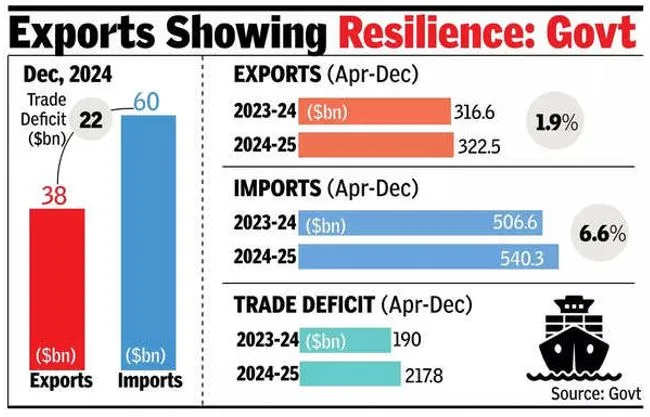

16th January 2025 (15 Topics)
Context
Trade deficit narrowed to a three-month low of $22 billion in Dec as exports contracted 1% to $38 billion, while imports grew almost 5% to $60 billion.
What is a Trade Deficit?
- A trade deficit occurs when the value of a country's imports exceeds the value of its exports. In simple terms, it means the country is buying more goods and services from other countries than it is selling to them.
- This results in a negative balance of trade, also known as a negative BOT (Balance of Trade).
- When money spent on imports is higher than the money earned from exports, a trade deficit is created.
- Trade deficits are an important indicator used to measure international trade activity. However, a trade deficit does not always mean a bad thing, as it depends on how the deficit is financed and the overall economic context.

Current Account Deficit (CAD):
|
What Does a Deficit Mean for an Economy?
- A deficit implies that more money is flowing out of the country than is coming in. This could be a concern if the deficit is not offset by other forms of income (like services, investments, or remittances).
- If a country imports more than it exports, it often needs to borrow money or attract foreign investments to cover the gap. A consistent trade deficit might indicate an unsustainable economic model, unless the deficit is being financed through productive investments that can lead to future growth.
- However, it is possible for a country to have a trade deficit while having a surplus in other areas, such as services or remittances. For example, India often runs a trade deficit but has a surplus in services, such as IT and consulting.

